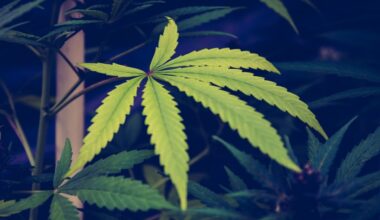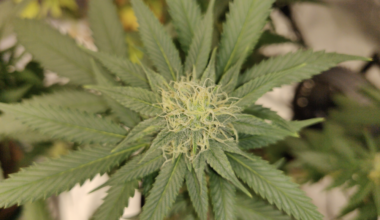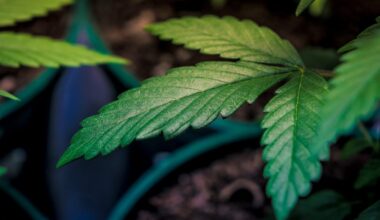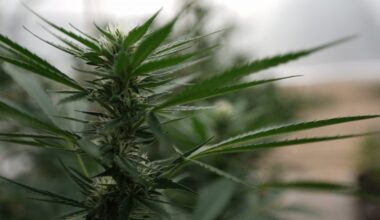
(This is a contributed guest column. To be considered as an MJBizDaily guest columnist, please submit your request here.)
Think of the dangers cannabis posed to the public before legalization. Have they proved to be a significant danger to public health?
There’s stoned driving, but what about children losing IQ points or incidents of psychosis? Or what about fatalities due to mold intoxication?
After nearly a century of prohibition meant to protect the public from marijuana’s harms, we now have data from almost 30 years of legalization, beginning with California’s legalization of medical marijuana in 1996.
We have medical reports from Canada, which legalized adult-use cannabis nationwide in 2018, as well as form the United States, where – as federal health regulators acknowledged in Aug. 2023 – cannabis is an accepted medicine for millions, despite its continued presence in Schedule 1 of the Controlled Substances Act.
Supporters of federal marijuana prohibition have had to rely on fear tactics disguised as science. This is because the evidence of cannabis’ causal harm is still thin in comparison to readily available substances that are not Schedule 1, ie. in the “dangerous with no medical benefits category.”
Now, in the legalization era, hyper-regulation of cannabis, like the recent panic over mold which caused regulators to suspend a commercial testing laboratory license in Massachusetts, continues to perpetuate myths about its dangers while failing to provide sound science on harm.
Mold is prevalent in cannabis and in our world
Cannabis flower, when properly cured, contains moisture. This makes it possible for mold spores to grow, even after a harvest has passed regulatory testing and is sitting on a retail shelf, because mold spores are airborne. We inhale mold spores daily from soil, compost, and household dust. They are most prevalent at construction sites and in healthcare facilities due to recirculating air.
The specific risk associated with inhaling cannabis mold is aspergillosis, a lung infection caused by the Aspergillus fungus. While this sounds alarming, the reality is that aspergillosis and mold infection from cannabis is extremely rare and primarily affects individuals with severely compromised immune systems, such as cancer patients undergoing chemotherapy.
Hundreds of thousands of chemotherapy patients consume untested cannabis regularly yet the probability of contracting aspergillosis is a tiny fraction of 1%. Known cases of harm, including one fatality, are literally one in millions.
Since 2012, Massachusetts and most legal states have allowed adults to home-cultivate and consume untested cannabis. Outdoor-grown cannabis is notorious for mold. Yet, in over a decade of legalization, there hasn’t been a single documented case of cannabis-induced aspergillosis in the state.
Nationwide, despite the explosive rise in legal and steady illegal cannabis use, only seven cases have been linked to cannabis—almost exclusively in immunocompromised patients. These patients should be educated and protected, but the issue is obviously extremely rare, not an imminent danger to public health.
‘No evidence of significant risk’ from mold in cannabis
The headlines and regulatory memos warning about “dangerous mold” fail to provide critical context. What levels of mold are considered dangerous? Is combusted cannabis less risky than vaporized cannabis when it comes to mold ingestion? Who with compromised immune systems is more at risk?
These questions go unanswered because the culture is to fearmonger, not to educate, leaving the stereotypes of danger in place.
Compare this to alcohol, a legal, widely accepted and unscheduled substance. In the last decade alone, alcohol poisoning has claimed over 40,000 lives in the U.S. That makes the probability of dying from alcohol poisoning hundreds of times higher than your chances of even contracting aspergillosis from cannabis, let alone dying from it.
To be fair, regulators are doing their job by addressing potential risks. However, their focus on cannabis mold seems disproportionate when there’s no evidence of significant risk.
Ninety five percent of all cannabis research funding since the 1970s is spent on uncovering potential harms, yet the results pale in comparison to the devastation wrought by alcohol, tobacco, or prescription drugs, not to mention household items such as Tide Pods, swimming pools, and ladders.
With billions spent on the research, we still want to know: what is the specific, causal harm of consuming cannabis, and how does the data compare to other legal substances? In short, where are the fatalities?
And no, a handful of contested deaths nationwide do not make a statistical blip, especially in context of harm from other products.
As the federal government considers rescheduling cannabis and the Massachusetts Cannabis Control Commission (CCC) updates its regulations, public health will be best served by grounding these decisions in unbiased science and harm reduction, not by perpetuating unfounded fears and abstinence-only education.
Ezra Parzybrook is the owner and principal of Northampton, Mass.-based Blue Skies Unlimited Cannabis Consulting. He can be reached at ezra@blueskiescan.com.
Medical Disclaimer:
The information provided in these blog posts is intended for general informational and educational purposes only. It is not a substitute for professional medical advice, diagnosis, or treatment. Always seek the advice of your physician or other qualified healthcare provider with any questions you may have regarding a medical condition. The use of any information provided in these blog posts is solely at your own risk. The authors and the website do not recommend or endorse any specific products, treatments, or procedures mentioned. Reliance on any information in these blog posts is solely at your own discretion.






